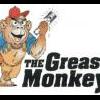Hi all,
It's common to see Mk3 Minis for sale for top-dollar, which have clearly been re-shelled into a later body.
The Mk3 Mini is generally accepted to be the model produced from late 1969, to sometime in 1976. It has internal door hinges but keeps the solidly-mounted front subframe, which gives the Mini its superbly responsive steering.
Sometimes the sellers are aware of this, sometimes not. Many people say that it doesn't matter and all internal-hinged Mini 'shells are the same... well they are definitely not! If you are investing considerable money or time into a pre-'76 saloon, you want to know you're getting the right thing for your money..
There are big legal/ moral issues involved here too.. some re-shells are legal, a lot are not. I'm not wishing to get involved with that on this thread but it's worth remembering, an early car with a chassis number stamped into it from the original 1980s/90s body it was 'built into' will do more than raise a few eyebrows with your cheerful DVSA inspector. The worst case scenario is that you will lose the car if it has questionable provenance, the best is that it will be put onto a 'Q' plate and you will lose your tax-exempt status- not nice on an otherwise decent car. (edit- I'm not sure Q-plates are issued nowadays..)
If you own a Mk3 car with a later 'shell and are happy with it, that's no problem. Every Mini is unique! But if you're in the market for an original car, you'll need to know what to look for. From a casual glance, all 1970-onwards 'shells look much the same. The differences are under the skin and make quite a difference.
Hence, this thread!
Please use the pictures below to age a Mk3 Saloon body shell ![]()
First off, have a look at the floor. All pre-1973 Mk3s had a 'remote' gear change which used a big alloy extension from the back of the gearbox, which runs under the floor. The Mk3 floor where the gear stick comes through, up to 1973 (and a little later for 850cc cars..), looks like this with an 'oval' shaped exhaust tunnel-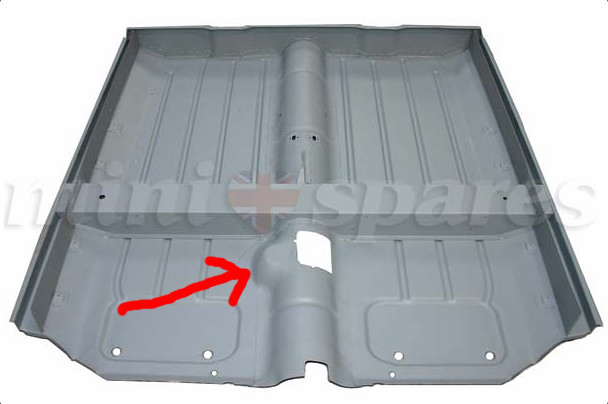 Remote change floor by David James, on Flickr
Remote change floor by David James, on Flickr
1973 onwards cars have the later, rod-change tunnel-
 Rod change floor by David James, on Flickr
Rod change floor by David James, on Flickr
Mk3 cars have the twin-cable handbrake setup, with a different bracket as below-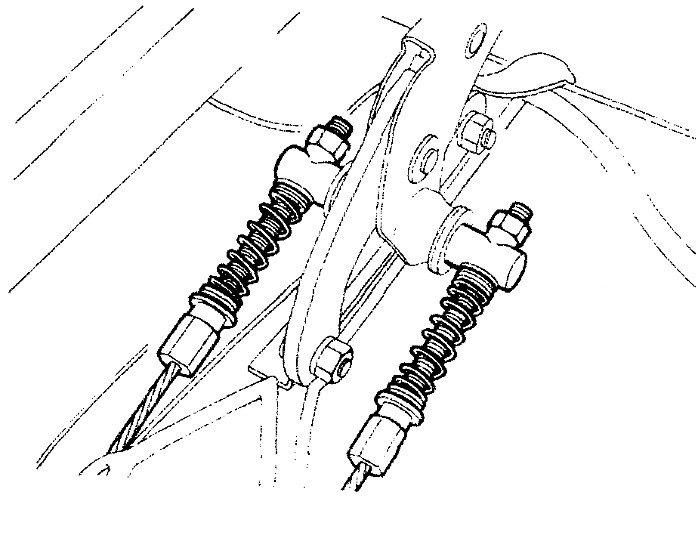 Twin handbrake cables by David James, on Flickr
Twin handbrake cables by David James, on Flickr
All Mk3 (1970-1976) cars had a solid-mounted front subframe with a twin-bolt fixing at the top. Look under the bonnet in the corners of the bulkhead cross-member. A solid-mounted (pre 1976) car should have twin fixing bolts here. Here's a subframe part-way in place, showing where the bolts go into- Solid subframe bolts by David James, on Flickr
Solid subframe bolts by David James, on Flickr
A 1976 onwards (mk4) car will have one single big bolt with a rubber mount here instead-
 Rubber front mount by David James, on Flickr
Rubber front mount by David James, on Flickr
Now check out the triangular plate that shields this area. It connects the bulkhead cross-member to the inner wing. Solid-mounted cars have a smaller hole here for the wiring to pass through on the O/S. Also, the four holes halfway down the plate are absent on early (pre '73?) mk3s - Bulkhead strengthener by David James, on Flickr
Bulkhead strengthener by David James, on Flickr
Now, still under the bonnet, check out the middle of the bulkhead cross-member, behind the carb if the engine is still fitted. There is a dip here to allow the carb's jet to clear the bodywork. On pre 1975 cars, this is very shallow as there was no waxstat jets fitted at this point- Shallow crossmember dip by David James, on Flickr
Shallow crossmember dip by David James, on Flickr
Mk3 cars also had 'drip rails' fitted to the guttering around the roof-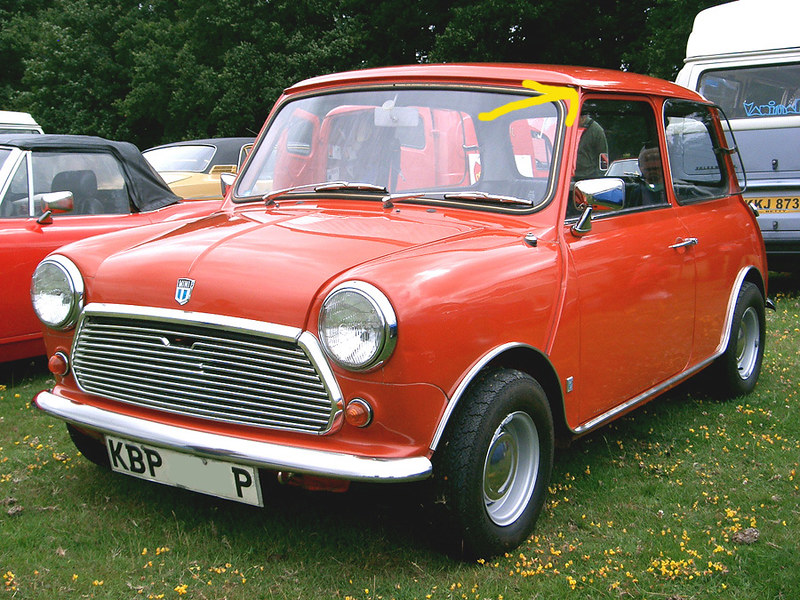 gutter drip rail by David James, on Flickr
gutter drip rail by David James, on Flickr
Now go to the back of the car. Look at the rear seat back. Pre 1973ish.. cars should have this big 'rotodip' hole-
Look in the rear 'companion' boxes, either side of the rear seat base. Cars made prior to 1975ish.. had welded-in ashtray holders, as pictured-
Now look in the boot. If the fuel tank is present, it should be the smaller 5.5 gallon size before 1976. This also needs the long support bracket, arrowed below-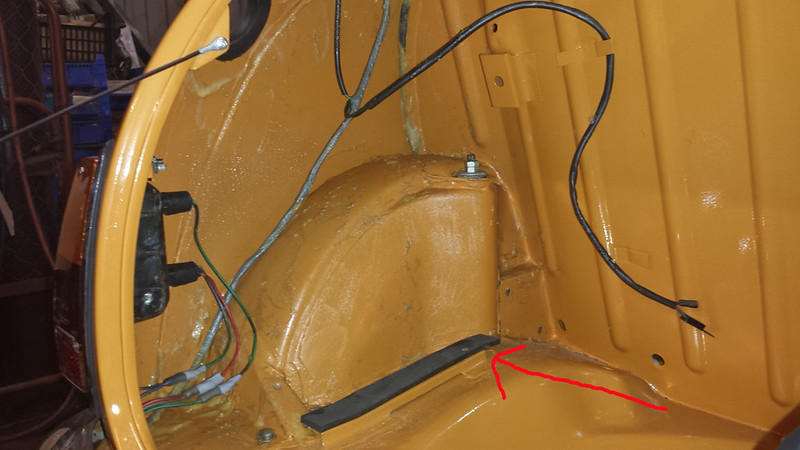 Early tank support by David James, on Flickr
Early tank support by David James, on Flickr
If you're lucky enough to find a car with it's original outer sills, pre 1971 cars had four-vent sills.
All cars after 1971 had the more familiar six-vent items, if original of course.
A really decent, restored, pre-71 car should have four-vent sills as they are still available new..
Hopefully the above should give you some advice about ageing a bare body shell.
Remember, all pre-1980 cars had NO chassis numbers stamped into the scuttle.
Of course, if the car is still complete, there are many, many bolt-on items that can allow you to age an otherwise unidentifiable car but, all these things can be changed; it's easy to be put off the scent with things like smaller, mk2/3 rear lamps and early switches, etc.
You'll notice I've put ...ish.. after some of the dates. This is because there are no definite cut-off points for changes to the Mini body shell. In most cases, records were not even kept by BL or whatever they were called at the time. Parts were used up 'as and when' and there was definitely the odd 'mongrel' shell out there that has been that way since it left the factory. However, the above is a reasonably reliable, basic guide to the major metalwork changes.
It is true that, Minis- being the cars they are, were commonly 'uprated' over the years. For example, it was all the rage to fit the larger, Mk2-style rear lamps over the early, tiny Mk1 units in the 70s and 80s. However, it's not easy to change everything, especially solid-mounted bulkheads etc, so it's relatively simple to I.D a genuine mk3 'shell.
Happy hunting, know what you're buying!! ![]()
Edited by Boycie, 24 February 2018 - 02:40 PM.





